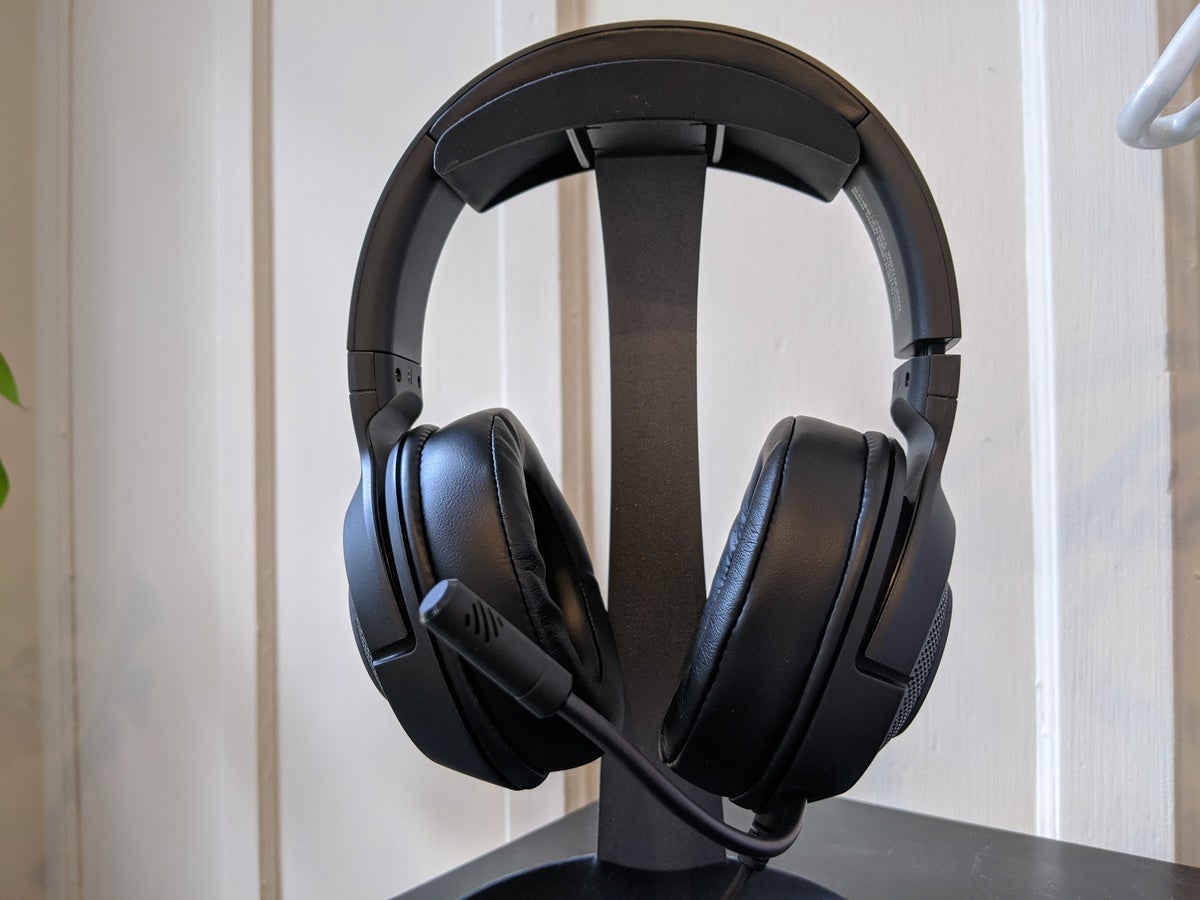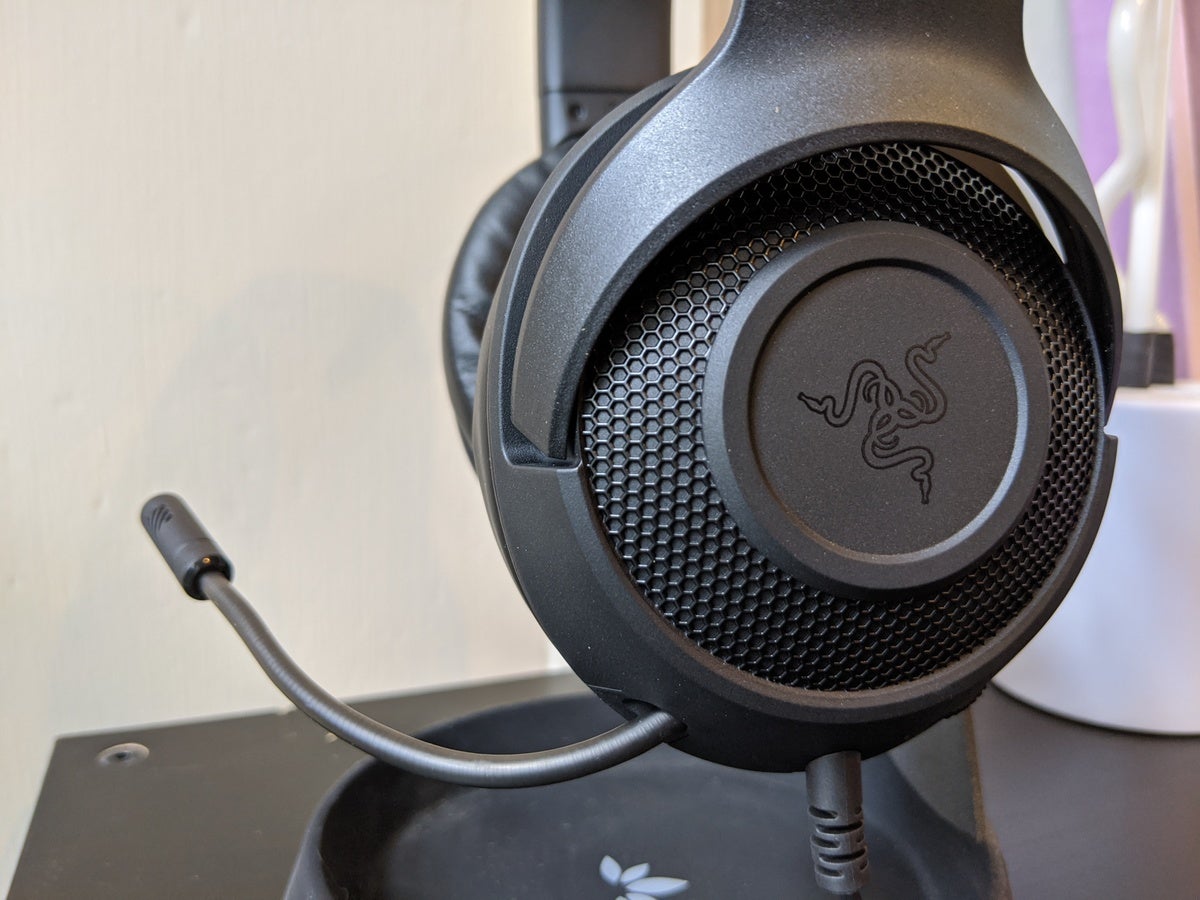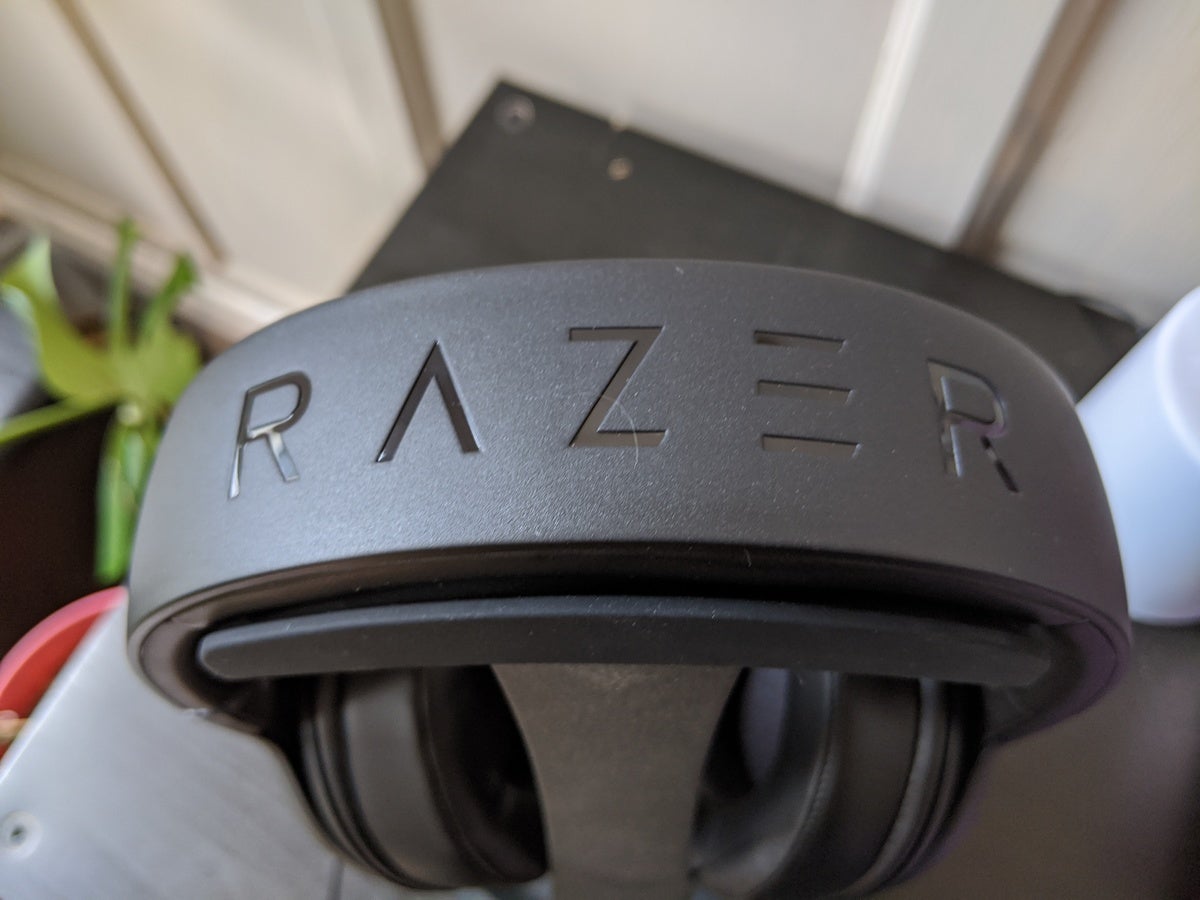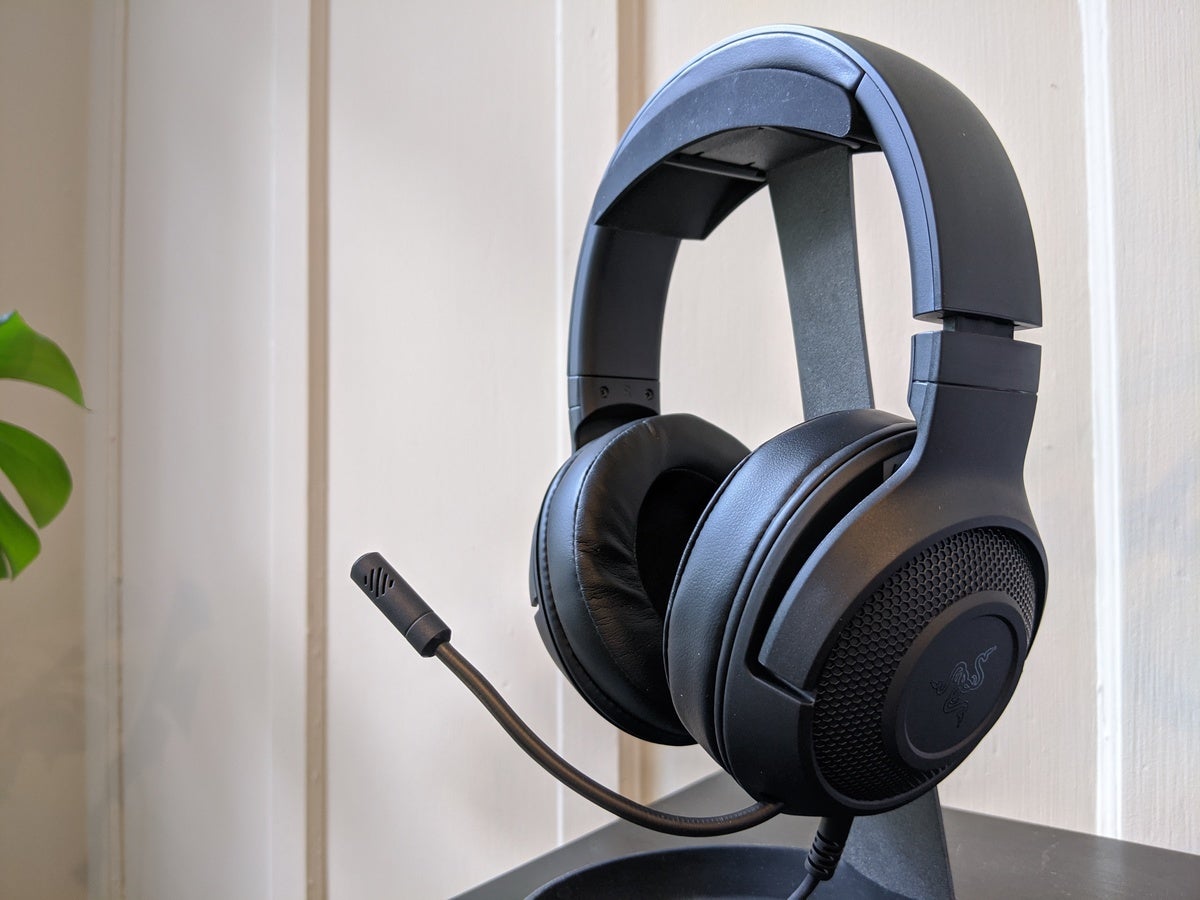Razer Kraken X review: A no-frills take on a headset that had few frills to begin with - emersonscrims
The Razer Kraken has long been a favourite of people buying a gaming headset on the two-a-penny. Listing at $80, and a great deal discounted level lower, information technology's one of the cheaper name-trade name headsets on the market.
But what if it were even less big-ticket? The new Razer Kraken X retails for a mere $50, or $30 cheaper than its sib. That's proving to be a popular Price lately, with both HyperX's Cloud Stinger and Astro's A10 vying for budget-semiconscious buyers in recent years. The Kraken X boasts a few advantages over the competition though, including incomplete 7.1 stand and the classical Kraken looking.
It's tranquillize non an amazing headset, mind you—but for $50? You could do (a lot) worse.
This review is part of our roundupof record-breaking gaming headsets . Run short there for inside information on competing products and how we tested them.
Taking other crack at it
I've said in the past: Just because you want a cheap headset doesn't mean you deficiency a cheap-looking headset. Fortuitously, Razer understands that sentiment better than just active any other manufacturer. The Kraken X may sell for only $50, but IT looks near-selfsame to its full-price predecessor. Jet black, with the same metal mesh and three-headed snake logo along the ears, the Kraken X blends right in with the rest of Razer's headsets.
 IDG / Hayden Dingman
IDG / Hayden Dingman But the details differ. For instance, the Kraken X's microphone is incapable to retract. A huge deal? No, non really. IT's not like you'd want to take the Kraken X out of the house even with the microphone removed. That I change wouldn't as if by magic make it look little like a gaming headset. But I prefer having the option to get the microphone out of my face, either by retracting it, flipping it dormie, or detaching it entirely. With the Kraken X, the microphone is forever in that location in your circumferential vision, and that can be annoying on occasion.
Razer also tailor a fewer corners connected build quality. The Kraken X headband is plastic clear through, without the imitation-leather trim or the metal reinforcement that underpins the standard Kraken. Information technology's also less padded, with only a thin level in the center of the headband. The other Kraken models extend the padding to the sides of the headband as advisable, an whol-circumferent soften.
That said, Razer gets gone with it because the Kraken X is incredibly lightweight. The entirely-plastic construction brings the Kraken X in at a mere 8.9 ounces, compared to 11.3 ounces for the acceptable Kraken. That might not sound like very much but information technology makes a huge difference in a device you break up for hours at a meter. The Kraken X even manages to best HyperX's aforesaid Cloud Cut, which weighs 9.7 ounces.
It's surprisingly comfortable as a result, steady if Razer skimped happening cushioning. The fit is a bit tight at first, and the headband adjustments are awkward and stiff, but the Kraken X feels good once broken. Give the headband a few gentle flexes when you take it out of the box to speed that process along.
 IDG / Hayden Dingman
IDG / Hayden Dingman And Razer finally moved away from circular earcups, which is large because…cured, ears aren't circular. It's hard to tell, but the Kraken X's earcups are slightly long. The resulting oval-shaped hollows are snuggery compared to Razer's ult headsets, just human body a bettor and more even seal against the skull, block out more ambient randomness.
On the whole, it's a solid effort—especially for $50—though there are few weak points. The cord is stiff caoutchouc, a far cry from the silky braided fabric Razer uses connected its opposite peripherals. The earcups also hold a lot of ignite. That's a problem with leatherette generally, but the Kraken X seems especially bad. I've had sweaty ears wearing the Kraken X here in San Francisco, which almost never happens. And the microphone mute button is sticky and unintuitive, unseeable happening the rear of the left ear. Click it in and you're muted—but you send away't straight severalize without reaching back to feel the switch's position once more. Information technology's a anguish.
Still, I'm impressed. Razer trimmed $30 off the Kraken's price with only a few minor changes. You couldn't ask for much more.
The Kraken X sounds pretty skilful too. Like the Cloud Stinger and A10, the Kraken X is double-geared towards mid-mountain chain reception. Information technology's a decent bet for these entry-level headsets to make. The mid-range is responsible a lot of what we hear day-to-day, and pushing it to the forefront helps dialogue pop. First impressions of the Kraken X are fairly positive.
 IDG / Hayden Dingman
IDG / Hayden Dingman It lacks a certain something though, once in a while. Low-pitched response is blood disorder, and the treble range (especially cymbal crashes) fails to good luck free from the mix the way you'd want. It's rarely bad enough to be distracting, but I credibly wouldn't hand over for the Kraken X first if I had other options. You mislay the depth and superpowe of a well-mixed action sequence, and the nuance of the quieter moments.
It gets the job done though. As an entry-level gambling headset? The Kraken X conveys the necessary plan of action information, and sounds halfway decent doing so. Look-alike the Cloud Stinger and A10, it's "good plenty," and that's really all we should look from a $50 headset.
I also mentioned up top that the Kraken X boasts 7.1 surround sound support. In real time this was surprising. Traditionally package-driven 7.1 has been reserved for USB headsets. The baseline Kraken X terminates in a standard 3.5mm jack though. How was Razer going to pull hit 7.1 support with a device that doesn't surfac in its Synapse software suite?
And the answer: Razer didn't use Synapse. You sustain to download a completely separate program instead, the ably named "7.1 Smother Sound." Note that it merely plant on Windows 10 PCs. You'll too need the activation code that came with your Kraken X, so don't throw IT out operating theater you'll need to die off fishing in your recycling bin. (I definitely didn't have that happen. Nope. Not me.)
 IDG / Hayden Dingman
IDG / Hayden Dingman Anyway, it's an 84MB substitute that attempts to replicate the 7.1 capabilities of Razer's USB headsets for the 3.5mm Kraken X—or for whatsoever speakers you attach to your PC. You can set the "Turnout" study to anything, so you can technically apply Razer's 7.1 surround solution to a high-end couple of headphones or a Logitech headset or your monitor's built-in speakers or anything else that outputs sound. It's not magic, and likely won't sound capital, only you can bang.
The intended terminus is your Microcomputer's headphone jack though. Plug in the Kraken X, pass over the utility, and you're able to toggle 7.1 wall up off and on. And then…non a lot happens, in my experience. I'm notoriously incredulous of software system-driven 7.1, but I've been affected by Razer's past efforts, including the high-end Kraken Last. The Kraken X, not much. It does diversify the soundstage a hair's-breadth, and might kick in a slight advantage in shooters, but the stereo system sound is probably just as useful in 95 pct of scenarios.
It's intriguing to watch Razer try to tackle this problem though. As I said, 7.1 support is almost exclusively reserved for headsets with built-in USB soundcards. While Razer's results aren't very intoxicating yet, I'd love to watch IT evolve. After all, package-driven 7.1 was universally panned less than a decade agone. Straight off information technology's—well, non amazing, but at to the lowest degree operable. Maybe this 7.1 Surround utility bequeath be just arsenic "okeh" one day.
 IDG / Hayden Dingman
IDG / Hayden Dingman Finally, it's worth mentioning that the Kraken X's mike is fortemente. It picks dormie a ton of background stochasticity. Again, this is a problem that's typically solved aside headsets with USB soundcards, American Samoa they employ resound gates. The Kraken X doesn't bear that luxury. IT performs fine in quiet environments, just if you've got blabby roommates or street noise or tied a whirring box fan sitting nearby? This might not be the primo headset for you.
Bottom line
Equivalent the Cloud Stinger, the Kraken X mostly suffers from organism the entry-level edition of a headset that's not that much more expensive. The Cloud over Stinger plays second-fiddle to the Cloud Alpha. The Kraken X sits in the apparition of some the Kraken and the Kraken Tourney Edition, a no-frills take on a headset line that had few frills to start out with.
That's non really a problem. Razer has a headset for everyone, at every terms point, and the Kraken X is a satisfying option at $50. It's comfortable (enough), information technology sounds decent (plenty), and the mike works. It's non exciting, just IT checks all the boxes I've come to expect in this price range.
Still, it's hard to recommend going with the somewhat-inferior-homey Kraken X with its somewhat-less-impressive audio when for just $20 or $30 more you could have a much better headset. IT's a relatively small remainder in price and a relatively large conflict in public presentation, and for about people, the accepted Kraken is the better option—or any of a number of different headsets in the $80 range.
Source: https://www.pcworld.com/article/399230/razer-kraken-x-gaming-headset-review.html
Posted by: emersonscrims.blogspot.com


0 Response to "Razer Kraken X review: A no-frills take on a headset that had few frills to begin with - emersonscrims"
Post a Comment